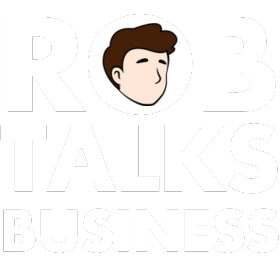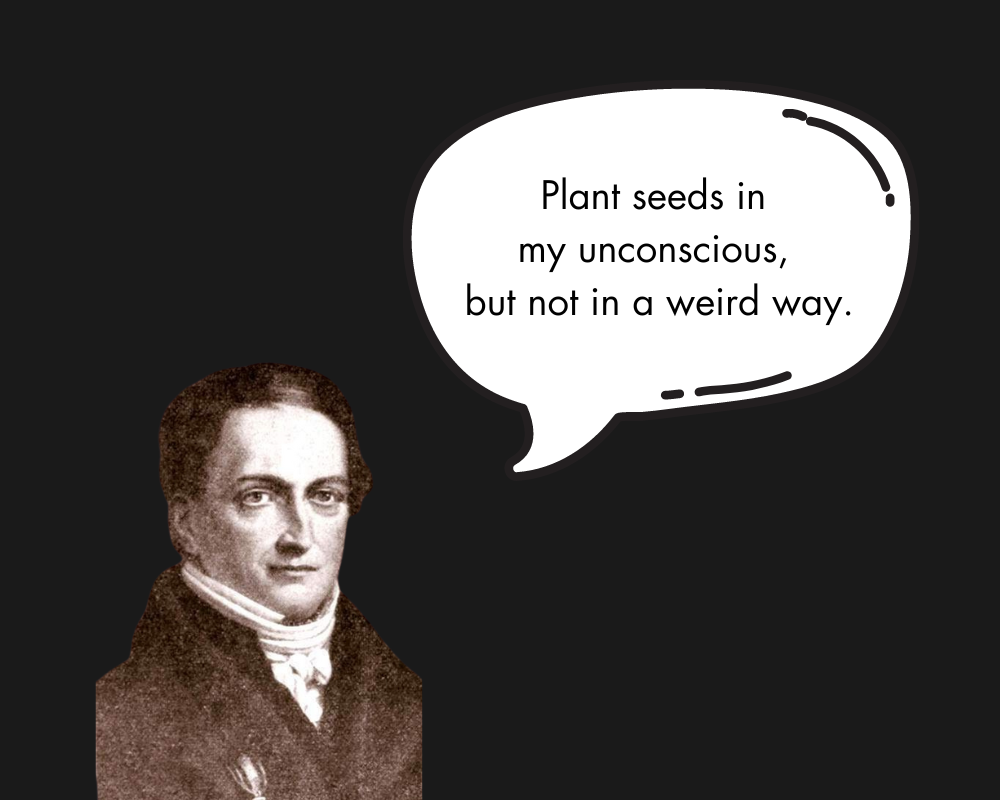"Beat the grass to startle the snakes" - Chinese idiom
When introducing a fresh new concept, product, or idea to the market, you often need to tread carefully.
While enterprises and larger organizations may have the luxury of time and resources required to employ extensive market readiness analyses and focus groups, small-to-medium sized businesses often skip this step entirely due to urgency, impatience, or associated costs.
How dangerous this can become. A misjudged launch can lead to missed opportunities, or worse, a failed product.
One powerful yet underutilized strategy in this high-stakes environment is the strategic use of ambiguity.
By crafting messages that can be interpreted in multiple ways, you can elicit critical reactions and gain valuable insights into how your market feels about your new idea - before you fully commit.
I’m not just making this up - in fact, it’s in the Bible.
Troubles With the In-Law: How David Used Strategic Ambiguity to Reveal Life-or-Death Feedback
David, a young warrior who had gained favor and popularity in Israel, began to suspect that his father-in-law, King Saul, secretly harbored animosity towards him. Saul’s jealousy over David’s growing reputation led David to fear for his life, but he needed proof of Saul’s intentions before taking action.
David confided in Jonathan, Saul’s son and David’s close friend, about his suspicions. Jonathan, unable to believe his father could harbor such thoughts, agreed to help David test Saul’s feelings.
David proposed that he skip a royal feast, where his absence would be noticed.
Jonathan would attend the feast and offer Saul a non-urgent excuse for David’s absence - an excuse that was polite and plausible but left room for interpretation.
This was the genius of David’s plan: the excuse was ambiguous.
If Saul had no ill will towards David, he might have seen the absence as minor negligence or simply a non-issue. However, if Saul secretly hated David, he would likely interpret the absence as a deliberate insult or act of defiance.
As David anticipated, Saul’s reaction was one of rage. He exclaimed that David deserved to die and ordered him to be brought to the palace immediately. This outburst confirmed Saul’s hidden hatred and provided David with the clarity he needed. David’s ambiguous action forced Saul to reveal his true feelings, allowing David to take appropriate steps to protect himself.
In marketing, this kind of strategic ambiguity can be equally powerful. Introduce an element of uncertainty to provoke reactions that reveal the true sentiments of your audience - whether they are potential customers, partners, or even competitors.
If this historical example does not resonate with you, let’s take a look at some more practical modern examples of genius in ambiguity.
Apple Gauges Market Readiness for the iPhone:
Apple is a brand that has mastered the art of ambiguity, particularly in its marketing campaigns.
One of the most notable examples of this is the early campaigns for the iPhone.
When Apple first introduced the iPhone, the company deliberately kept the details of the device’s capabilities vague. The initial advertisements and presentations showed off the sleek design and highlighted a few key features, but they left much to the imagination.
The message was clear: this was a revolutionary product, but exactly how revolutionary was something consumers would have to discover for themselves.
This ambiguity was not an accident.
Apple knew that by withholding certain details, they could create a sense of mystery and excitement that would drive consumers to dig deeper, speculate, and discuss. The market’s response to this ambiguity was overwhelmingly positive - tech enthusiasts, media outlets, and everyday consumers alike engaged in a frenzy of speculation about what the iPhone could do.
This created a buzz that Apple could then monitor to gauge the public’s interest and expectations.
Through this ambiguous approach, Apple was able to gather insights into what features consumers were most excited about and what concerns they had.
For instance, when people speculated about the iPhone’s lack of a physical keyboard, it revealed both a fear of change and an eagerness for innovation.
Apple used this information to refine its messaging and product development strategy, ensuring that when the full details of the iPhone were finally revealed, they addressed both the excitement and the concerns of their target audience.
Tesla Uses Polarizing Design to Let Its Target Market Define Itself:
Another example is Tesla’s reveal of the Cybertruck.
When Tesla unveiled the Cybertruck in 2019, the vehicle’s design was unlike anything the automotive world had seen before.
With its sharp angles, stainless steel body, and unconventional look, the Cybertruck immediately sparked debate and confusion.
Was this a serious product?
Was it a joke?
How could this futuristic design fit into the existing market?
Tesla’s presentation of the Cybertruck was intentionally ambiguous.
CEO Elon Musk provided some details about the vehicle’s capabilities, such as its durability and performance, but he left many questions unanswered. The design itself was a form of ambiguity - so radically different from traditional trucks that it could be interpreted in multiple ways.
The reaction was polarizing.
Some people loved the bold, futuristic design, while others mocked it or dismissed it as impractical.
But this was exactly what Tesla wanted.
The ambiguity of the Cybertruck’s reveal allowed Tesla to test market reactions in real-time. Those who responded positively were likely to become early adopters, while those who reacted negatively provided Tesla with valuable feedback on potential market challenges.
Tesla used this information to refine its approach, ultimately leaning into the polarizing nature of the Cybertruck as part of its brand identity. The vehicle was not meant to appeal to everyone - it was designed for a specific segment of the market that valued innovation, boldness, and a willingness to stand out.
The ambiguity of the reveal helped Tesla identify and engage with this target audience more effectively.
Why You Should Employ This Strategy:
Here’s why running a test like this is crucial:
- Minimizing Risk and Avoiding Missteps: Ambiguity allows you to gauge reactions without fully committing to a particular message or product feature. If the initial response is lukewarm or negative, you have the opportunity to adjust your strategy before making a full-scale launch. This helps you avoid costly missteps that could alienate your audience or result in a failed product. Testing the waters with ambiguity provides a buffer against potential backlash, giving you a chance to refine and perfect your offering based on real feedback.
- Revealing Hidden Market Insights: Consumers don’t always express their true feelings in straightforward ways. By introducing an ambiguous message, you encourage your audience to reveal their deeper emotions, preferences, and concerns. These insights can be invaluable, uncovering hidden desires or anxieties that you might not have identified through traditional market research. For example, if your ambiguous message sparks strong emotions - whether positive or negative - it indicates that you’ve touched on something significant that could influence the success of your product.
- Identifying Early Adopters and Advocates: Early adopters are crucial to the success of any new product or idea. They are the individuals who will not only embrace your innovation but also spread the word to others. Ambiguous messaging can help you identify these key players by seeing who reacts positively to the unknown or unconventional aspects of your offering. Those who are intrigued rather than deterred by the ambiguity are likely to be the ones who will champion your product from the start, providing you with a solid foundation of support.
- Shaping Your Final Message: Finally, running a test with ambiguous messaging helps you craft a more effective and targeted final message. Once you’ve gathered insights from how your audience interprets and reacts to the ambiguity, you can fine-tune your communication to address their needs and expectations more precisely. This ensures that when you do launch, your message resonates with your audience, leading to higher engagement and a greater chance of success.
Who Should Attempt This Strategy
- Innovative Brands and Startups: Brands that thrive on innovation and disruption are well-suited for using ambiguity in their messaging. If your brand is known for pushing boundaries or introducing groundbreaking products, ambiguity can enhance your mystique and generate buzz. Startups, in particular, can benefit from this approach by creating curiosity and standing out in a crowded market. The strategy works well when your audience expects and appreciates creativity and is open to exploring new ideas.
- Brands Targeting Early Adopters: If your target audience includes tech-savvy consumers, trendsetters, or early adopters, ambiguity can be a highly effective way to engage them. These groups are typically more open to exploring new concepts and are intrigued by the unknown. They are likely to respond positively to ambiguous messaging, interpreting it as a sign of innovation rather than confusion. For these audiences, ambiguity can foster a sense of exclusivity and excitement around your product.
- Companies Introducing Revolutionary Products: When launching a product that is truly unique or a game-changer in its category, ambiguity can help you test the waters without revealing all your cards at once. This strategy allows you to gauge how the market might react to your innovation before fully committing to a specific positioning or message. It’s particularly useful for products that challenge the status quo, where initial reactions can be unpredictable.
Who Should Not Attempt This Strategy
- Established Brands with Conservative Audiences: Brands with a long history of consistency and reliability, particularly those catering to more conservative or traditional audiences, may find ambiguity to be counterproductive. If your audience values clarity, trust, and straightforward communication, ambiguous messaging could confuse or alienate them. These consumers are likely to prefer clear, direct information about what your product offers and why it’s beneficial.
- Companies in High-Stakes Industries: In industries where trust and clarity are paramount - such as healthcare, finance, or legal services - ambiguity can be risky. Consumers in these sectors are often looking for reassurance and transparency. An ambiguous message could be misinterpreted as evasiveness or a lack of competence, potentially damaging your brand’s reputation. In high-stakes industries, it’s usually better to focus on clear, precise communication that builds confidence and trust.
- Products Requiring Immediate Understanding: If your product’s value proposition is complex and needs to be understood quickly, ambiguity might not be the best approach. For instance, products with intricate features or those addressing urgent needs (like safety equipment or emergency services) require clear communication to ensure consumers understand their benefits right away. In such cases, ambiguity can lead to confusion, reducing the effectiveness of your messaging and potentially harming your sales.
Sold? How You Can Craft Ambiguous Messages to Elicit Reactions and Gather Feedback for Free:
Crafting an ambiguous message that successfully tests market reactions requires a delicate balance. The goal is to create a message that intrigues and provokes thought without being so vague that it confuses or alienates your audience.
- Identify the Core Elements You Want to Test: Start by defining what you want to learn from your ambiguous message. Are you testing the appeal of a new product feature, gauging interest in a concept, or trying to uncover hidden concerns? Identifying your core objectives will help you craft a message that subtly points to these elements without giving everything away. If you’re introducing a new technology, you might want to test whether consumers are more excited about its innovation or concerned about its usability.
- Use Double Meanings and Open-Ended Phrases: Ambiguous messages often rely on language that can be interpreted in multiple ways. This could involve using double meanings, open-ended questions, or statements that are intentionally vague. The key is to ensure that the message leaves room for interpretation, allowing different segments of your audience to take away different meanings. A tagline like “Redefining the Future” could spark curiosity - does it refer to a new product category, a major technological leap, or something else entirely?
- Incorporate Visual Ambiguity: Ambiguity isn’t limited to words. Visual elements - such as images, colors, or even the design of the marketing material - can also be used to create ambiguity. A visual that hints at a new product feature without showing it fully can generate intrigue and discussion, leading to valuable feedback. Apple’s early iPhone ads showed close-up images of the device’s sleek design without revealing its full capabilities, prompting viewers to imagine and speculate on what it could do.
- Create a Sense of Mystery: To effectively engage your audience, your message should spark curiosity and encourage them to seek out more information. This could involve releasing a teaser campaign with minimal details, or launching a cryptic social media post that invites speculation. Tesla’s Cybertruck reveal didn’t just showcase a new vehicle - it presented a design so unconventional that it left many people questioning the truck’s purpose, market fit, and even whether it was serious. This mystery drove conversation and engagement, helping Tesla gauge reactions.
- Balance Clarity and Uncertainty: While ambiguity is key, it’s important to strike a balance between being too vague and too clear. If your message is overly cryptic, it may frustrate or alienate your audience. If it’s too straightforward, it won’t generate the desired level of intrigue or reveal the insights you’re looking for. The best ambiguous messages provide just enough information to engage the audience while leaving some questions unanswered. A campaign for a new fitness app might say, “Transform your routine—like never before,” hinting at unique features or benefits without explaining exactly how the transformation will happen. This invites curiosity while still communicating a promise of something new and exciting.
- Monitor and Adapt: After releasing your ambiguous message, monitor the reactions closely. Pay attention to how different segments of your audience interpret the message and what discussions it sparks. Use social media listening tools, surveys, and direct feedback to gather insights. Based on this feedback, you can adapt your next round of messaging to either clarify, expand on, or pivot away from certain elements, depending on what you learn. If your ambiguous message leads to confusion about your product’s purpose, you might follow up with a more focused campaign that clarifies its key benefits, using the insights you’ve gathered to hone in on what matters most to your audience.






